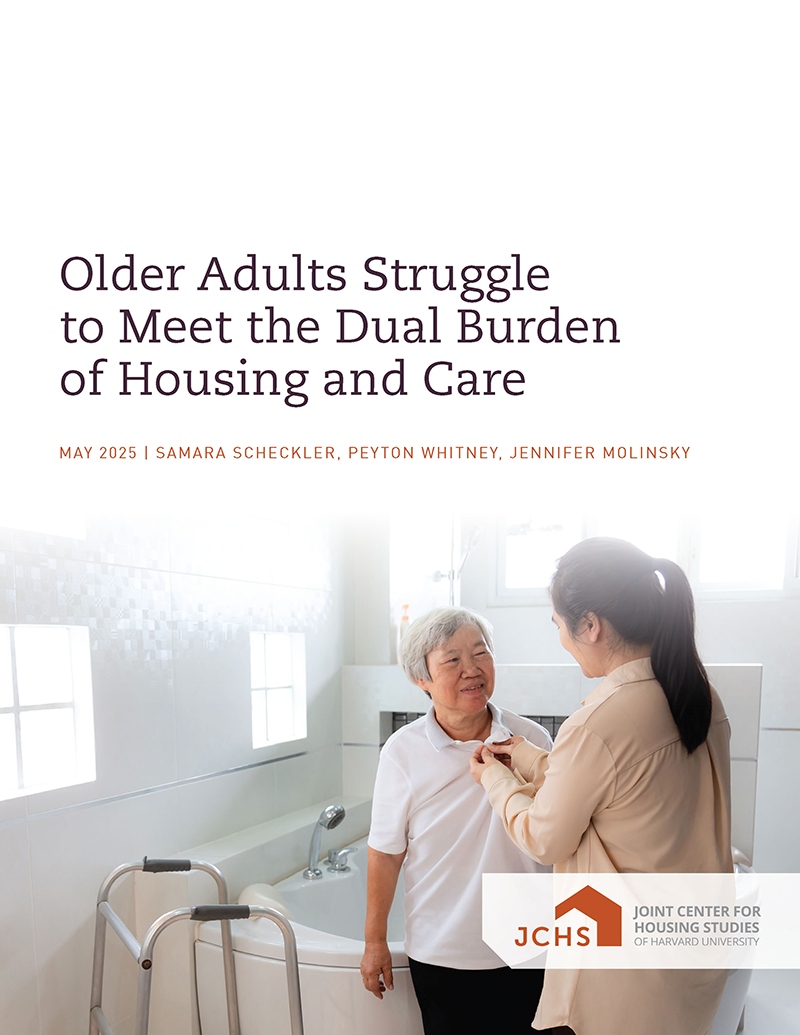Older Adults Struggle to Meet the Dual Burden of Housing and Care
While the majority of older adults will need care and assistance at some point in their lives, services for tasks such as dressing and bathing are affordable to only a very limited number of older adults, particularly after housing and other living costs are paid. This paper used 2021 Genworth cost of care data, the American Community Survey, and the Elder IndexTM, a regional cost-of-living estimate specific to older adults’ budgets, to construct a metro-level estimate of the total cost for housing, other basic living expenses, and one daily visit from a paid home health aide. Our analysis focused on single or partner households with at least one resident age 75 or older, an age where needs for services at home become increasingly likely. While one third of older households experienced housing cost burdens in 2021, fully three-quarters of households in our sample were unable to afford a single daily care visit after paying housing and living costs. Affordability rates were even lower for renters and households of color. Yet those unable to afford needed services at home have very few options for public funding or payment assistance to meet these needs. Results emphasize how housing and care costs together can represent a “dual burden” on older households that grows more severe with age as health and functional abilities decline.

